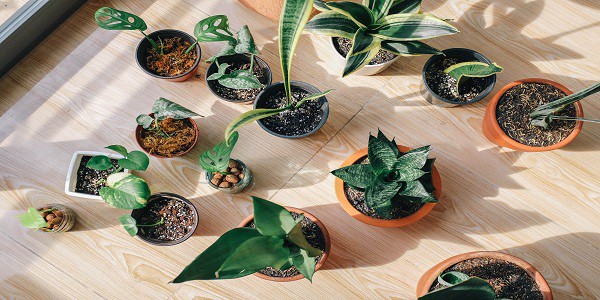Soil requirements for houseplants are so intricately linked and interdependent that they need to be discussed together for a more educational and holistic guide on plant care.
The kind of soil and light you have will determine when you need to water your plants.
Plant Roots and Soil Structure
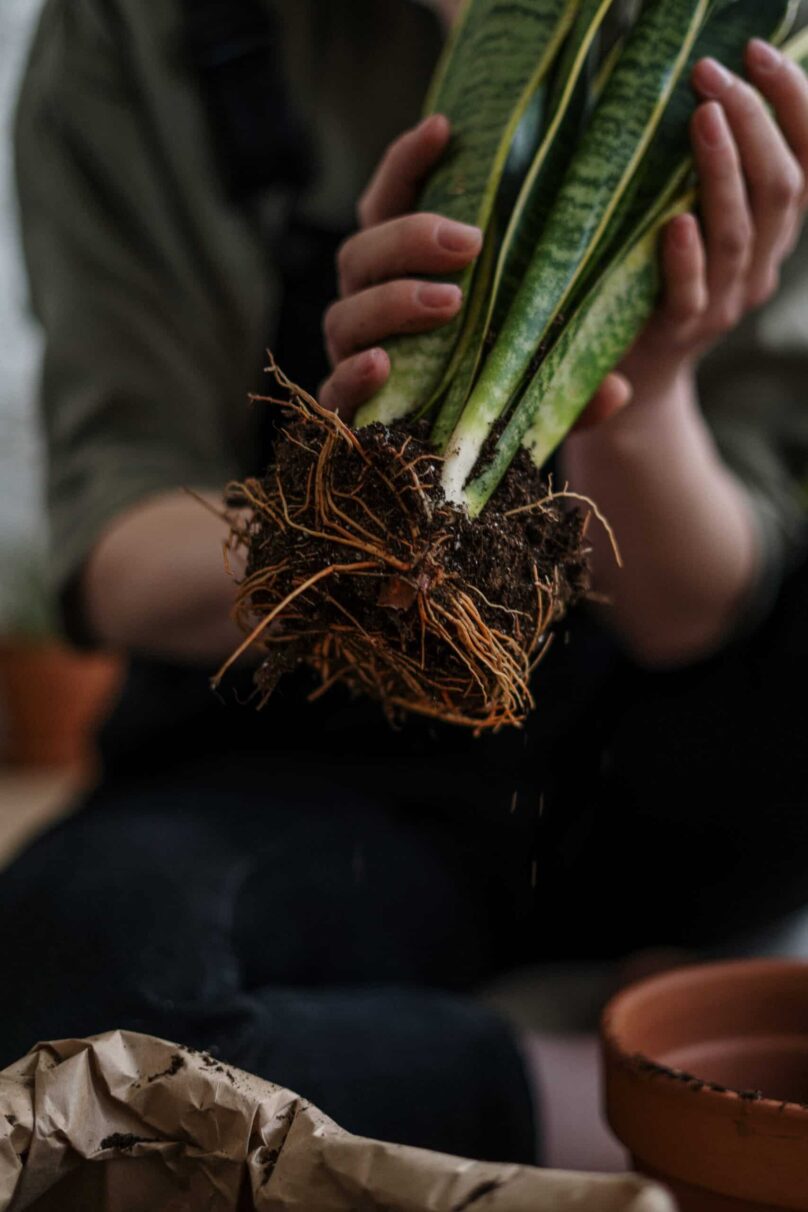
Soil is fundamental because it is home to colonies of microbes both good and bad and nutrients, and is a prime factor that determines the growth of a plant’s root system.
Roots come in all shapes and sizes. some plants have thin, fibrous roots that remain just below the soil surface, while other plants have thick, fleshy, robust roots that are good at holding on to the water for long periods.
Taller plants and trees often have a vigorous root system that travels deep into the soil in search of water and nutrients.
Despite their differences, all roots have the same functions: drawing nutrients from the soil and sending them up to the plant. nutrients are essential for the growth of new leaves, a strong stem, fruits, and flowers.
Most houseplants are killed due to overwatering because we tend to keep watering into an already waterlogged soil. when the soil is wet for long durations, a plant’s roots will eventually drown and rot.
Think of what happens if you leave a sheet of paper or a root vegetable submerged in water for too long. it becomes soggy at first, then slowly dissolves and disintegrates. it’s the same for roots.
Also when a plant is watered too often, it becomes lazy and root ball growth slows down. if someone else is doing its job for it, why bother it thinks?
Too much water also results in consistently moist soil, making it a breeding ground for fungus gnats and pests.
The dreaded disease of root rot is usually a combination of all these factors, leading to the browning of roots, loss of lower leaves, wilting, stem turning mushy, and then certain death.
Keeping the soil dry or moist but not wet. so always check the texture of the soil before watering. An airy, freely draining soil is ideal.
Potting soil guide
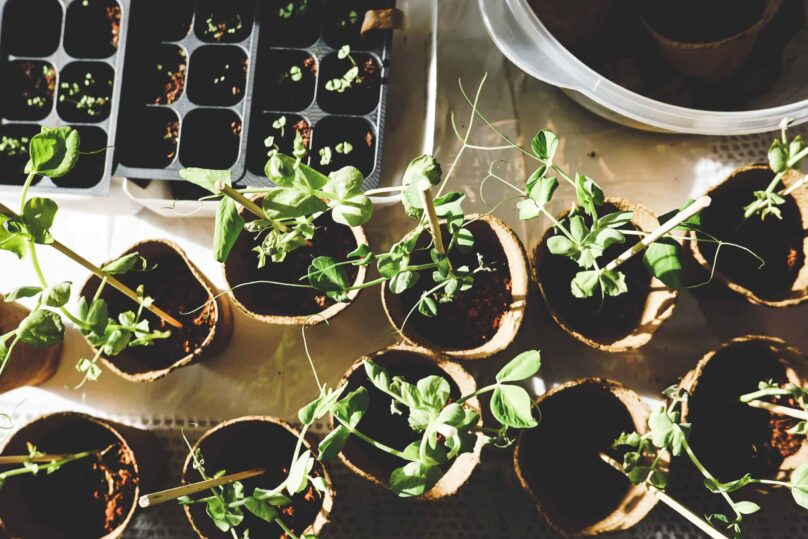
Garden soil
On close examination of most nursery-bought plants. you will find many with perhaps the exception of cacti and succulents potted in common garden soil, which ranges from black to red or sandy, with a little manure mixed in.
this works for nursery plants that are grown out in the open under green shades, promoting efficient transpiration of water. the more light and heat a plant receives, the faster a plant will draw and lose water, and the quicker the soil will dry out.
however, in our homes where light is often reduced to fifty percent of what nursery plants receive, transpiration slows down considerably. thus, the soil remains moist for a longer duration.
You cannot take the nurseryman’s advice on when to water the plant you have bought. you need to observe and figure out your own watering schedule depending on your plant’s needs.
Not only does regular garden soil make a mess of our floors.it is also heavy, clumpy, and retains water for long periods. to test this fill a pot with regular garden soil till it runs out of the drainage holes of the pot.
Record the time .then take some soil in your hand and make a ball of it. you will find that it balls up well and feels heavy in your hand. this is a sign that the medium is heavy and dense.
Forest soil mix
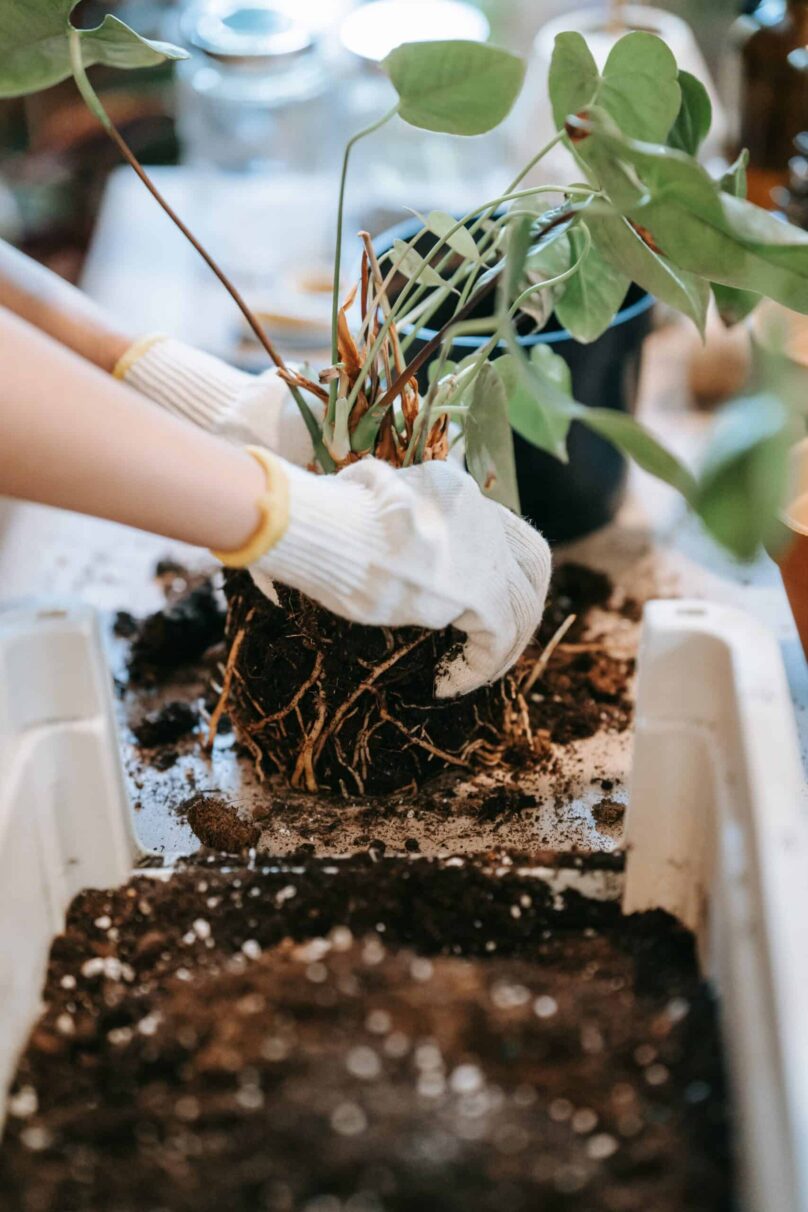
The ideal soil composition for healthy and robust potted plants is one that drains quickly, is light and crumbly, and has enough air circulation for optimum root growth.
In the hobby, this type of potting mix is commonly referred to as a jungle mix named so for the airy, moist, nutrient-rich soils found in the understorey of forests.
The topsoil in understories comprises fallen leaf litter, tree bark, actual soil, and carbon-rich charcoal leftover from forest fires. This seems outlandish to replicate in homes, but it is in fact rather simple. Here is a rough formula.
You can adjust and play with it to find the mix that suits your needs.
Garden soil + cocopeat or leaf litter + orchid bark or coco chips + perlite or sphagnum moss + Horticultural charcoal
The mix I make at home is usually a 30:20:40:10 composition. but it is not written in stone. I make my mixes with whatever is at hand. and often I find myself completely forgoing the garden soil component.
Garden soil provides a certain amount of density for plant stability and comes with nutrients; cocopeat- a by-product of coconut is excellent at retaining water. leaflitter, orchid bark, and coco chips provide porosity an inorganic additive derived from heated volcanic glass is excellent at retaining water while also aerating the soil; and horticultural charcoal is rich in carbon and draws out impurities from the soil.
This mix is ideal for houseplants because it is an airy and freely draining medium. you will find that this mix tends to dry out more quickly than regular garden soil, thus making it ideal for those who are heavy-handed with the watering can.
Now, repeat the watering test from before. fill a pot with this potting mix, then water it till it runs out of the drainage holes. you will find that the water runs out almost immediately, and when you try to ball up a clump of soil, it quickly crumbles in your hand.
Garden soil updates
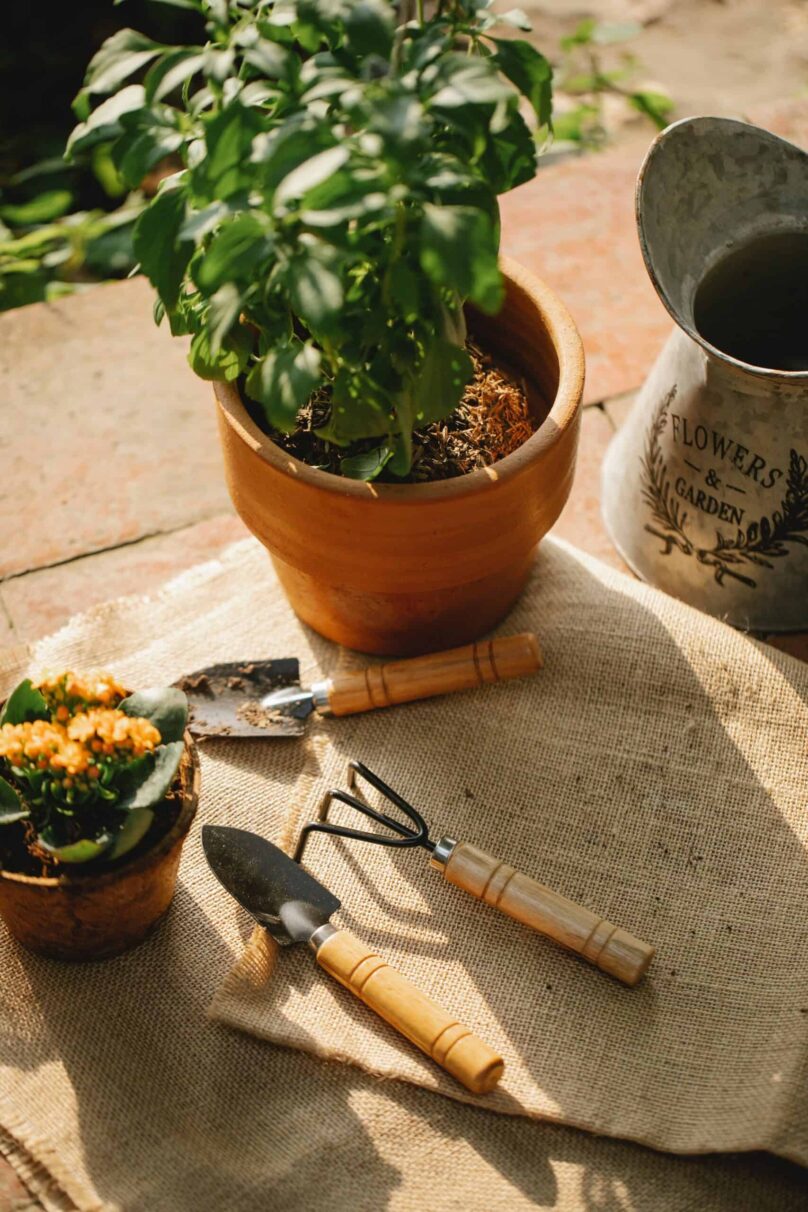
Most plants will be fine with garden soil if you add a few elements to loosen and aerate it. A good composition is:
Garden soil + good quality compost + vermiculite or perlite + leaf litter or cocopeat, in 50:20:20:10 ratio.
Cactus soil
Cacti and succulents need a totally different growing medium, one that is fast draining, porous, gritty, and sandy. A common recipe is: garden soil + coarse sand + perlite + pumice + charcoal combination.
General hydroponics
If you don’t want the hassle of soil and the pests it can attract, go soil-less. semi hydroponics is a great way to monitor plants’ root growth and health. it also takes away the problem of watering plants when you go on holiday since the plants are already set in a water tray. so you will need:
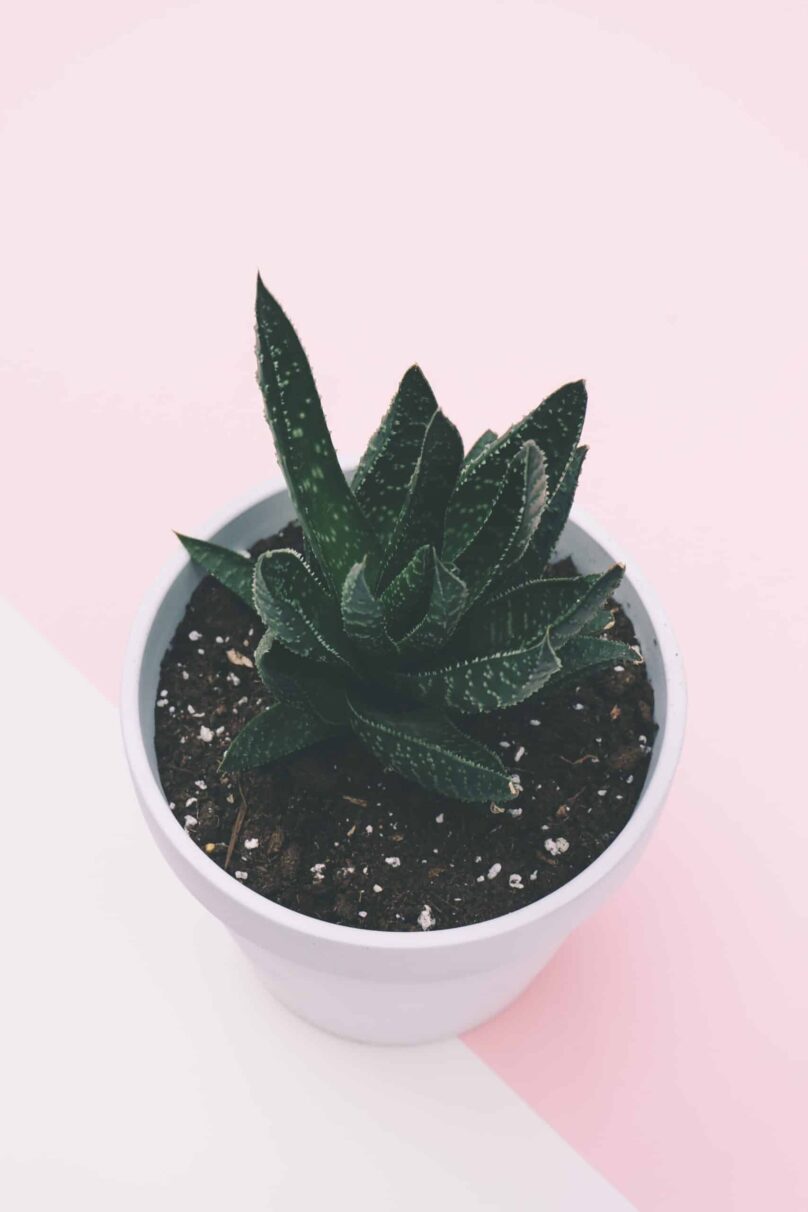
Lightweight expanded clay aggregate
These clay balls are an excellent medium to grow plants because they are good at wicking up water in the right doses, and since they are sterile, there’s no chance of pests or disease.
Nursery or orchid pots with drainage holes
Any nursery pot with good drainage holes. clear plastic pots are even better because they allow you a visual of the plant’s roots.
Atray or a cache pot without drainage holes
This will act as a water reservoir.
Liquid nutrients
Liquid seaweed or hydroponics nutrients to fertilize your plants.
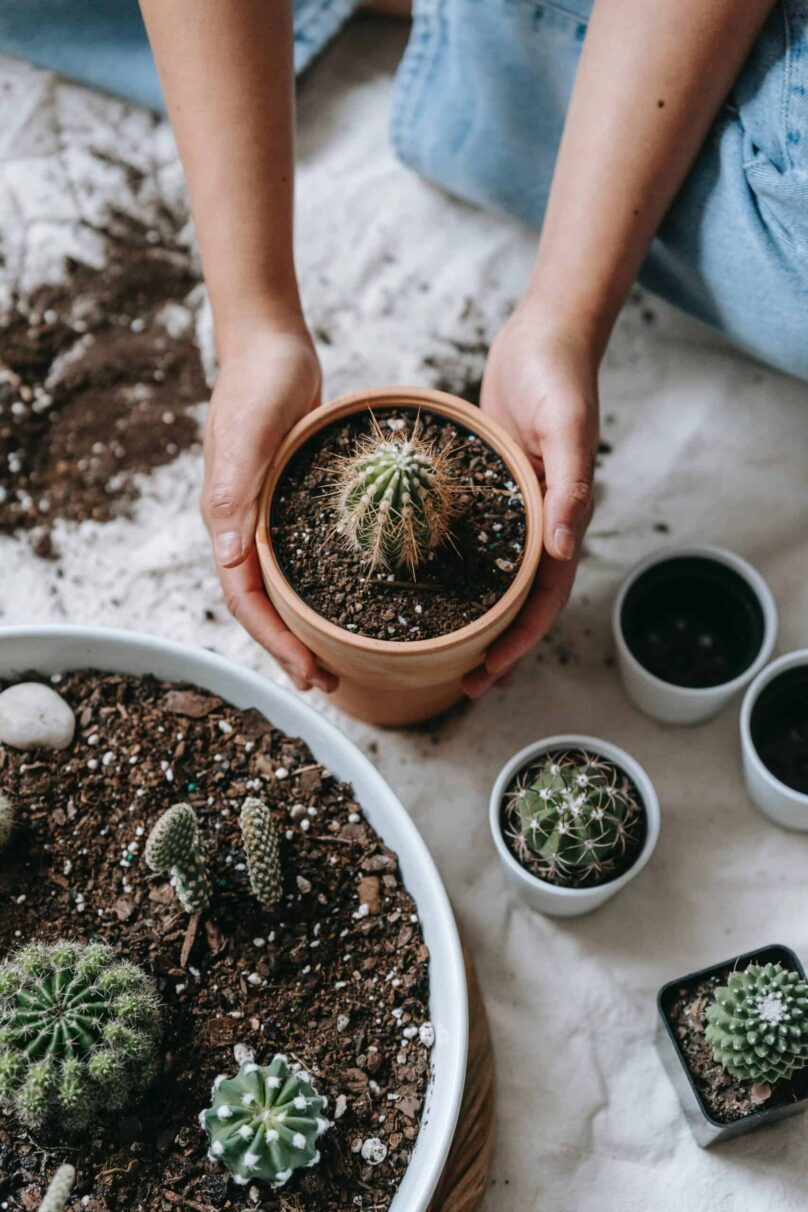
Guide
- Take the plant you want to grow in hydroponics and gently wash its roots till it is clear of any soil.
- Fill the nursery pot with drainage holes with one-third LEGA.
- Place your plant at the center and fill in the remaining LEGA till the top like you would do for any regular plant.
- Fill one-third of the tray or cache pot with water.
- Add in the nutrients according to the package instruction.
- Now place the plants into the tray or cache pot so that it is one-third submerged in water.
FAQ
How many hours of artificial light do SOIL FOR HOUSEPLANT need?
SOIL FOR HOUSEPLANT only needs a few hours of artificial light each day.
What are the best conditions for SOIL FOR HOUSEPLANT?
The best conditions for soil for houseplants are when the soil is moist but not soggy, and when the soil is well-drained.
What type of SOIL FOR HOUSEPLANT do I need?
To ensure your houseplants thrive, it is important to choose the right type of soil. Different plants have different soil requirements, so be sure to select a soil that is appropriate for the plants you are growing.

